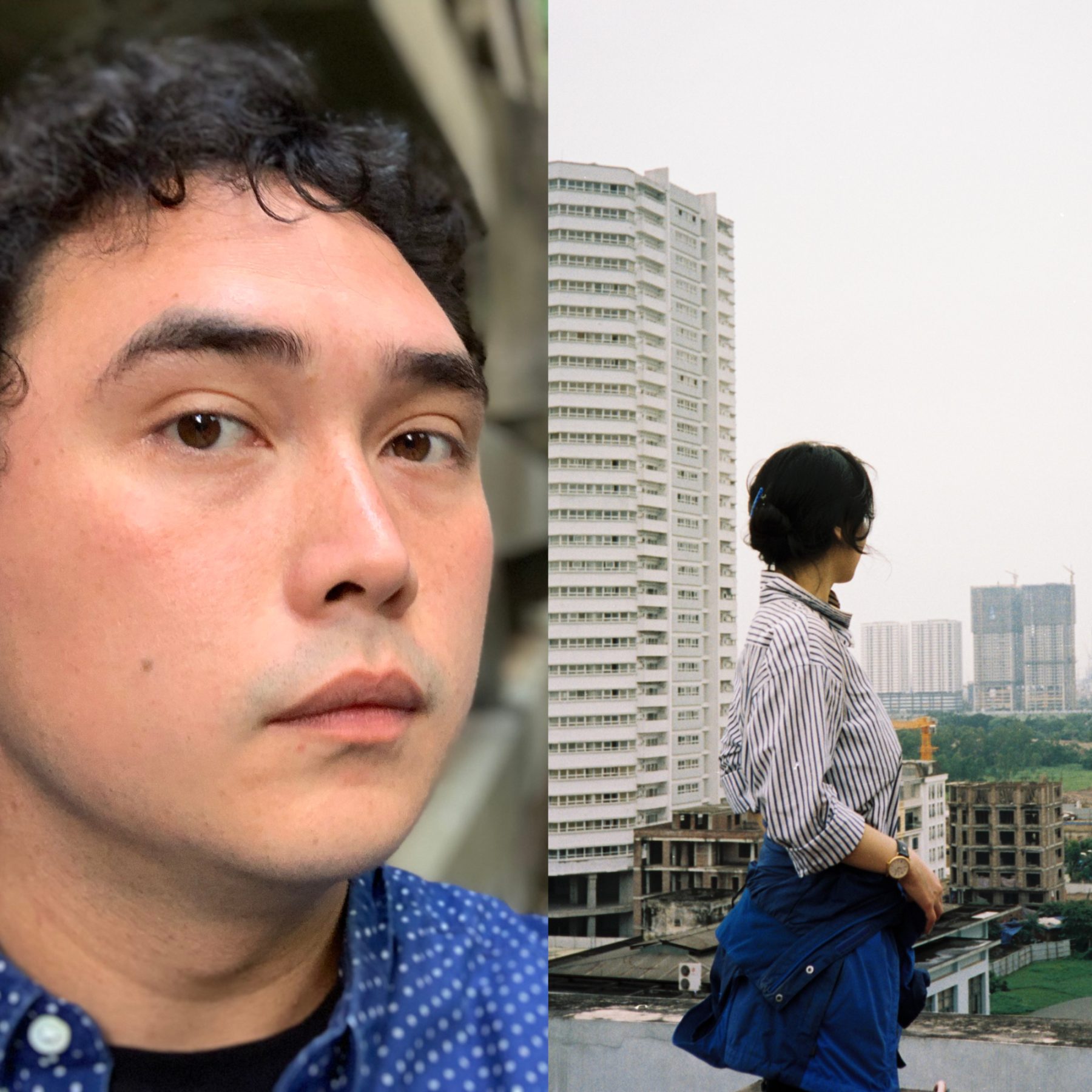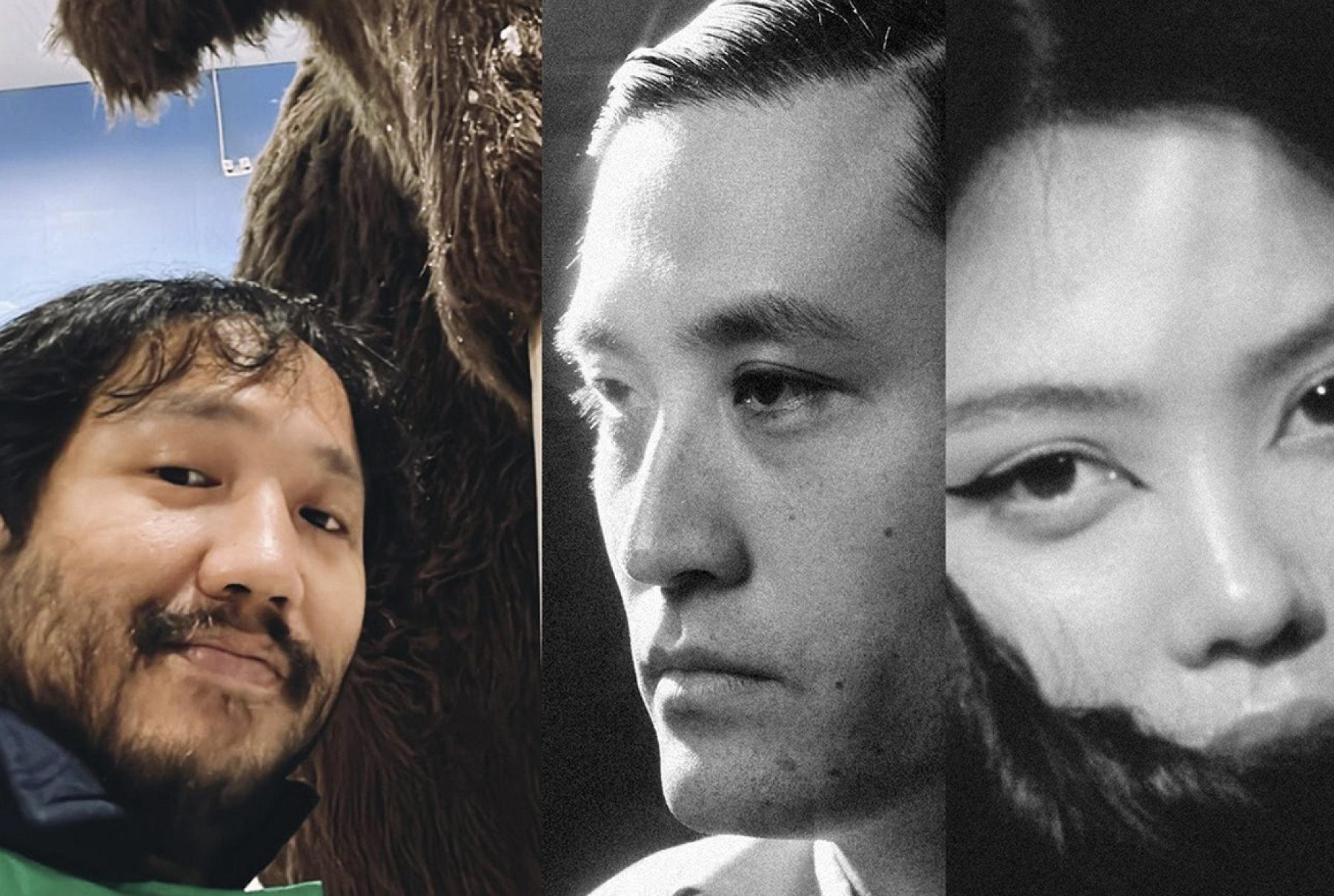This exhibition is on view from October 17 to December 21, 2025.
Cinematic Involutions
Exhibition
ON VIEW FROM OCTOBER 17, 2025–December 21, 2025
Cinematic Involutions brings together six recent moving-image works (2019–2024) by four international artists—Simon Liu, Thuy-Han Nguyen-Chi, Tulapop Saenjaroen, and Yuyan Wang—who turn inward to explore the recursive, self-processing nature of images. The exhibition asks: why make moving images now? In an age marked by political silencing, fractured memory, and digital overstimulation, these artists reveal how the motion of cinema itself can become an act of resistance, reflection, and renewal. Through gestures of repetition, dissolution, and transformation, their works consider how movement—within both bodies and screens—can generate new forms of life and attention.
Dwelling in the recursive rhythms of cinema, the artists of Cinematic Involutions transform loops, glitches, and repetitions into generative acts. From the tactile explorations of slime in Yuyan Wang and Tulapop Saenjaroen’s works to Simon Liu’s dense montage of everyday imagery and Thuy-Han Nguyen-Chi’s cinematic storytelling, each artist offers a distinct engagement with the vitality and instability of the moving image. Together, their works propose that by looking deeper—into the motions that sustain and unsettle us—we might glimpse cinema not as a closed system, but as a living, breathing ecology of relation.
The exhibition is curated by Toby Wu, 2025 Graduate Curatorial Fellow, and Danni Shen, Senior Curatorial and Public Programs Assistant.
The Aux: Intermedia Gallery was made possible by the Harvard University Committee on the Arts (HUCA) and the Department of Art, Film, and Visual Studies.
Artists
Simon Liu (b. 1987, Hong Kong) is an artist filmmaker whose practice centers on the rapidly evolving psychological and sociopolitical landscapes of his homeland of Hong Kong through material abstraction, speculative history, and subversion of documentary cinema practices via short films, multi-channel video installations, mixed media prints, and 16mm projection performances. His work has been exhibited at institutions including the Whitney Biennial 2024, Museum of Modern Art, MOCA Los Angeles, The Shed, PICA, Tai Kwun Contemporary, Museum of the Moving Image, Everson Museum, Moderna Museet, "Dreamlands: Expanded", and the M+ Museum. His films have screened at festivals globally including the Toronto, New York, Berlin, Rotterdam, BFI London, Edinburgh, Jeonju, and Hong Kong International Film Festivals alongside the Sundance Film Festival, New Directors/New Films, CPH:DOX, Cinéma du Réel, Punto de Vista, Viennale, and the Media City Film Festival. The M+ Museum and MoMA recently acquired Liu’s Quadruple 16mm Projection Highview, along with other recent works, for their Permanent Collections. He is currently editing his first feature film, Staffordshire Hoard. He lives and works in New York City.
Tulapop Saenjaroen (b. 1986, Chon Buri, Thailand) is an artist and filmmaker whose practice encompasses performance, sound, and moving image. His recent works interrogate the correlations between image production and production of subjectivity as well as the paradoxes intertwining control and freedom in late capitalism. In combining narrative and the essay film genre, he investigates subjects such as tourism, self-care, mental illness, free labor, power relation in storytelling, metaphysics, and cinema itself through re-making and re-interpreting the produced images and their networks. Saenjaroen received his MFA in Fine Art Media from the Slade School of Fine Art, UCL, and MA in Aesthetics and Politics from CalArts. Saenjaroen’s works have been shown in film festivals, screenings, exhibitions, internationally including Berlinale, Locarno Film Festival, New York Film Festival, Cinéma du réel (Paris), International Film Festival Rotterdam, DOK Leipzig; International Short Film Festival Oberhausen; Images Festival (Toronto), European Media Art Festival, e-flux screening room, Ghost 2565: Live Without Deadtime; M+ (Hong Kong), REDCAT, Museum of the Moving Image (NYC), 100 Tonson Gallery, Harvard Film Archive, Abandon Normal Devices (UK); among many other venues. Saenjaroen lives and works in Bangkok.
Yuyan Wang (b. 1989, China) is a filmmaker and video artist. Her works involve recycled materials from the industrial sphere of image production, tracing their mutation and proliferation within the digital frameworks and representations. Through the editing process, Wang deconstructs and recontextualizes the intricate hierarchies and inherent meanings in materials —whether found, processed, and produced—striping symbols of their conventional paths of perception and turning them into immersive sensory experiences. Wang completed her studies at the École des Beaux-Arts de Paris in 2016 and later at Le Fresnoy - Studio national des arts contemporains in 2022. Her work has been showcased at Tate Modern, Palais de Tokyo, UCCA Beijing, the 12th Berlin Biennale and various festivals, such as the Berlinale International Film Festival, the International Film Festival Rotterdam, MoMa Doc Fortnight, CPH:DOX, the European Media Art Festival, receiving numerous awards. She lives and works in Paris.
Thuy-Han Nguyen-Chi is a Milky Way-based artist whose practice mutates in and out of film, sculpture, installation, performance, and interdisciplinary research. Collaborating with characters in search of consciousness, language, and freedom, her recent body of work explores the aesthetic, political, and epistemological possibilities of image and sound. Nguyen-Chi's work has been presented in art and cinema contexts, including Berlin Biennale; Göteborg International Biennial for Contemporary Art; Belvedere 21, Vienna; De Appel, Amsterdam; Experimental Media and Performing Arts Center, New York; Museum für Moderne Kunst, Frankfurt; Museum of Modern and Contemporary Art, Seoul; Roy and Edna Disney CalArts Theater, Los Angeles; Staatliche Kunsthalle, Baden-Baden; Villa Medici, Rome; Whitechapel Gallery, London; Copenhagen International Documentary Festival; Montréal Festival International du Film sur l'Art; New York Film Festival; Rencontres Internationales Paris/Berlin; Reykjavík International Film Festival; and Singapore International Film Festival. In 2023, she was included among the 20 New Talents in Art in America, nominated for the New:Vision Award1, and awarded the Jury Grand Prix2 and Golden Lola3 for Into The Violet Belly. Having studied Fine Arts at the Städelschule and Film at the School of the Art Institute of Chicago, she is currently a PhD researcher at the Centre for Research and Education in Art and Media at the University of Westminster and was formerly a fellow of the Junge Akademie at the Academy of Arts.
About the Curator
Toby Wu is a writer, curator and PhD Student in the department of Art, Film and Visual Studies at Harvard University. He researches Modern and Contemporary Art in the Transpacific through elemental media theory, specifically Southeast Asia towards East Asia and North America. His research and curatorial interests lie in the notion of substrates across mediums (paper, lacquer, celluloid and sculpture), or rather volumetric forms which necessitate consideration of an object’s environmental constitution.
Material
Curatorial-Essay.pdf
Material
Artists-and-Work-Descriptions.pdf
Archive
Explore more of our rich history through our archive.

